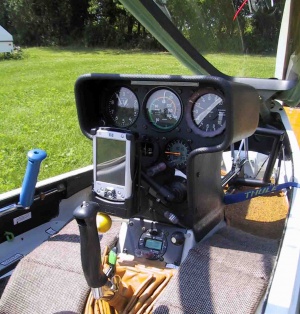If you wish to contribute or participate in the discussions about articles you are invited to contact the Editor
Approach
| Applications | |
|---|---|
| Title | Approach |
| Author(s) | GMV. |
| Level | Medium |
| Year of Publication | 2011 |
Approach, landing and take-off are critical flight phases and the major need of commercial operators is to have full operations in all weather conditions. As a consequence, precision approach is a mandatory requirement.
The GNSS, with the aid of ground-based augmentation (local elements), will satisfy the needs for precision approach as defined in the aeronautical standards, and could replace or complement the navigation infrastructure of airports in regions where the system is inadequate. The most prominent example is the airports that are not equipped with instrument landing systems.
Application Architecture
For approach and landing, the Instrument Landing Systems (ILS) will remain the primary source of guidance for CAT I/II/III operations in major airports, because it is the current standard system for precision approach.[1]
Approach systems are commonly designated as precision or non-precision and it is worth to distinguish between those systems:
These descriptions were adapted from the Operational Requirements For a Global Navigation Satellite System for ICAO.[2]
Precision approach systems: A precision aid is designed to guide aircraft, by the use of azimuth and glide path information, along a defined runway approach path to a decision height (DH) ranging from 200 feet to 0 feet above the point of touchdown.
Non-precision approach systems: A non-precision aid is designed to bring the aircraft sufficiently close to an airfield to allow the pilot to have a clear view of the runway to enable the aircraft to be landed without recourse to any other navigation aid. A non-precision approach may use a variety of systems to fix position, and in some cases uses the information provided from the en-route system or from systems whose guidance signals do not give position fixes accurate enough for precision approach and landing.
With the introduction of a GNSS system, it may be possible for this single system to satisfy the operational requirements for both precision and non-precision approaches without the need for any other ground based navigation system situated within the vicinity of the final approach fix or at the airfield.[2]
These applications are considered safety critical applications.
Performance-based approach
The performance-based service-oriented operational concept will drive the modification of the approach Concept of Operations. As GNSS landing is progressively introduced, ILS will revert to a backup system to support the risk of GNSS outage.[3]
The Performance-based navigation approach method is used because it offers a number of advantages over the sensor-specific method, providing a new instrument approach facility at a significantly lower cost than existing ground based alternatives to operators.
Unlike traditional sensor-based approach procedures like VOR or ILS, that require a specific sensor complement to fly an approach, RNAV approach procedures provide a common information for pilots.
In addition, the moving or modification of a VOR station will originate an impact on several procedures, such as VOR on routes, VOR approaches, missed approaches, among other procedures.
Using GNSS, the need to maintain approaching routes based in ground sensors will be reduced minimizing the associated costs, for instance, in terms of fuel.
Adding new sensor-specific procedures will intensify the cost, and the rapid growth in available navigation systems would soon make sensor-specific routes and procedures unaffordable.
Finally, ILS is not an option available in all airports. In certain airport scenarios there is no ILS, due to the lack of terrain available around the runway, e.g., airports located in river banks, or near sea shore.
The Receiver Autonomous Integrity Monitoring (RAIM) limit for non-precision approach is 0.3 NM. [4]
Application Characterization
The approach and landing systems will increasingly move to GNSS based landing in order to improve airport accessibility, either in CAT I conditions (ILS and GNSS as backup/complementary systems) or CAT II/III conditions (GBAS CAT II/III with ILS/MLS backup).
Aircraft's will increasingly rely on GNSS to fly steep, curved and segmented approaches in the terminal area, to improve capacity and reduce environmental impact.
For LVP (Low Visibility Procedures) operations, lighting presents more than 50% of the investment cost. As more airports are able to handle these types of operation, lower cost lighting technologies will be developed and made available. [3]
The GNSS aviation approach applications will be supported by an augmentation system. In order to use SBAS for approaches, Air Navigation Service Providers must publish runway procedures and aircraft and operators have to be equipped with certified receivers and be approved for operations.
Application Examples
Several companies supplies products that can be used for such applications. These devices have WAAS navigation capabilities and are approved to fly LPV glideslope approaches without reference to ground-based navaids of any kind.
Some of these companies are:
Notes
References
- ^ Policy on GNSS for Navigation Applications in the Civil Aviation Domain, EUROCONTROL Navigation Domain, April 2008
- ^ a b Operational Requirements For a Global Navigation Satellite System for ICAO, ICAO Global Navigation Satellite System Panel, First Meeting, Montreal, October 1994
- ^ a b SESAR Consortium, The ATM Target Concept D3, September 2007
- ^ Performance-based navigation Manual, ICAO, March 2007

